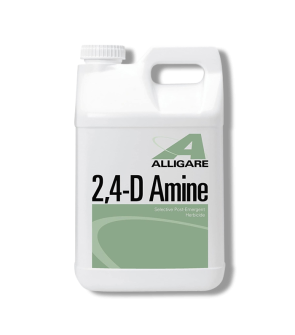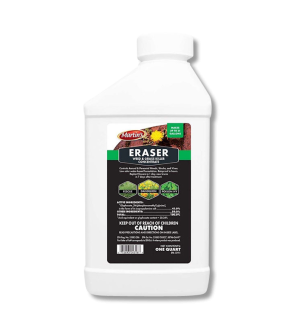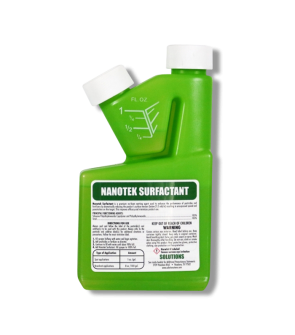Hemlock Control
Most Effective Products
Hemlock Control: How to Get Rid of Hemlock
This page is a general hemlock control guide. By using the products and methods suggested, you can get control of hemlock in your lawn or turf areas. Follow this DIY guide and use the recommended products and you will get 100% control of hemlock in your yard. If you are facing decreasing health conditions after interacting with this plant then it is recommended to consult with your local hospital or medical professional in an immediate time frame.
Hemlock, also known as poison hemlock, deadly hemlock, or poison parsley is a highly poisonous biennial weed that grows throughout the United States and is commonly confused with water hemlock or wild carrot.
Due to its attractive white flowered appearance, travelers from Europe brought it to United States to be used as a garden plant. However, over time its effects became apparent as livestock or people would ingest this weed and become affected by its poisonous traits.
Typically, hemlock grows in the spring and sometimes year-round if locations provide enough sufficient moisture or if the soil is rich in nutrients. Poisoning from this weed occurs through ingestion of any part of the plant, such as the seeds, flowers, and leaves. Ingestion is the main risk factor associated with hemlock, but its toxic alkaloids can also affect your skin and respiratory system.
There is no antidote for hemlock, but since it is a part of the carrot family it can be difficult to avoid or identify this weed. Read on to learn how to properly control or identify hemlock in your yard through our DIY treatment guide. The directions and products throughout this article will help to properly eliminate hemlock from your property.
Identification
The first thing you will need to do when conducting an treatment plan is to properly identify the weed infesting your desired foliage area. Misidentification can lead you to using the wrong treatment methods and products, which costs time and money. To properly identify hemlock, refer to the following characteristics.

To compare the similarities between hemlock and wild carrot, examine the image above. Hemlock is shown on the left and wild carrot is on the right.
- Hemlock is a biennal weed that completes its growth in two growing cycles. When the plant is young in its first season of growth, it grows in a rosette arrangement with fern-like leaves. During its second season of growth, the plant will bolt and grow upright, growing 6 to 10 feet in height.
- Hemlock stems have reddish or purplish spots, and is not hairy. In contrast to wild carrot, which will have no spots and is hairy on its stems.
- Similarly to wild carrots, flowers of mature hemlock will be small, white and grow in umbrella shaped clusters. The biggest way to differentiate between these plants is that hemlock will have hairless stems, purple or reddish blotches, and will release a pungent bitter-like odor when bruised. Also, wild carrot stems have hairs, whereas hemlocks stems don't, and wild carrot stems do not have purple spots.
- When the flowers of hemlock produces seeds, the plant dies.
- Leaves of hemlock will be bright or glossy green, divided, and fern-like in appearance.
- Hemlock produces a long white taproot system and can be mistaken for wild parsnips.
Use the above image and description to help you properly identify hemlock. If you are uncertain, contact us with a photo of your weed and we will properly identify the foliage and suggest treatment options.
Inspection
Once you have confirmed that you are dealing with hemlock on your property, you can move on to inspection. During this phase, you will need to locate the areas on your property where hemlock is growing and what conditions of the yard are helping this weed to grow. By learning this information, you can correctly use the appropriate product or where to apply it.

Where to Inspect
Hemlock growing season ranges from spring to fall. This plant thrives in shaded areas with moist and fertile soil.
Infestations usually occur along roadsides, fences, pastures, crops, ditches, within yards and gardens.
Due to hemlocks ability to grow in and around edible plants such as crops or gardens precautions should be taken before ingesting or touching plants near hemlock.
What to Look For
Besides the bitter musty odor, hemlock is a biennial weed that takes two years for flowering to occur. Hemlock is almost identical to plants such wild carrot, wild parsnip, and other edible members of the carrot family making it a risk to ingest wild foliage.
If you have hemlock in your property, examine the stems which should be non-hairy and contain purple to reddish blotches.
They usually germinate in the spring or summer, and grow to their rosette stages by fall before going dormant. When the second spring comes around, the plant bolts. It will bloom by late spring and produce seeds by late summer or early fall. After producing seeds, the plant dies.
Treatment
When controlling hemlock, minimize exposure to skin and airways by wearing the appropriate personal protective equipment (PPE) such as gloves, safety masks, safety goggles, long-sleeve shirt, long-sleeve pants, and closed-toe shoes with socks.
Ensure that you are taking frequent breaks when mowing or applying herbicide products to hemlock.
For control of hemlock, we recommend using a post-emergent product containing either 2,4-D, triclopyr, or glyphosate. Best to make these applications in the fall and early spring when plants are still relatively young.
Do not burn hemlock or hemlock debris, because burning may release toxins into the air.
Step 1: Measure and Mix Post-Emergent Herbicide

Begin by calculating the square footage of the treatment area to determine how much herbicide material to use. To find the square footage, measure the treatment areas length and width in feet and multiply them together (length X width = square footage).
For spot applications in cool-seasoned turf areas, apply 1/4 pint of 2,4-D Amine Selective Post-Emergent Herbicide with 3 gallons of water.
For a broad-spectrum product that will kill hemlock anywhere, check out Eraser 41% Glyphosate.
Apply 2 1/2 oz. of Eraser 41% Glyphosate per 1 gallon of water to treat 300 sq. ft. Beware this product is non-selective and will kill any vegetation it contacts.
To better control spray drift with Eraser 41% Glyphosate, we recommend placing a cardboard box between the weed and turf.
For either products being used, you will need a handheld pump sprayer.
When using a non-selective herbicide like Eraser 41% Glyphosate be sure to label the sprayer specifically for "Non-Selective Herbicide Use" to prevent cross-contamination in the future.
You may use surfactants like Nanotek Surfactant to increase hemlock control with 2,4-D Amine Selective Herbicide. Surfactants cannot be used with Eraser 41% Glyphosate.
When using Nanotek Surfactant, add 1 fl. oz. of this product per 1 gallon of 2,4-D Amine Selective Herbicide solution.
Fill your sprayer with half the amount of water, add the measured amount of herbicide, then pour in the remaining amount of water. Close the spray tank lid and shake until well-mixed.
Step 2: Spray Post-Emergent Herbicide to Hemlock

Spray the mixed herbicide onto the top and bottom of the hemlock weeds on a fine-spray pattern to avoid drift and run-off.
A minimum of 30 days must pass after the first treatment before applying a second application of 2,4-D Amine Selective Post-Emergent Herbicide.
Eraser 41% Glyphosate may be reapplied when 4 weeks have passed after the first application.
Prevention
Once you have treated hemlock and removed it from your lawn, you will need to make sure it does not return. Here are some preventative measures to take to lessen the chances of hemlock returning. As mentioned previously, whether dry or secreting fluid hemlock is a toxic plant that must be handled with the appropriate personal protective equipment (PPE).

- Monitor the area the following year to check for new hemlock plant growth from past seeds.
- Hand pulling with a covered gloved hand is recommended for small hemlock infestations. When pulling the weeds, dig several inches below the hemlock to remove the entire taproot. Avoid disturbing the soil around hemlock as much as possible as this can cause germination of seeds.
- Mow when lawn has reached a height of 3 to 4 inches to disrupt seed activity. However, mowing must be repeated often to prevent hemlock from establishing in your turf.
- Regularly treat hemlock with 2,4-D Amine Selective Post-Emergent Herbicide or Eraser 41% Glyphosate as they appear in the early spring to early fall. To achieve complete eradication, repeated applications with these products may be required to completely remove hemlock.
Key Takeaways
What is Hemlock?
- Hemlock is a toxic biennial weed that grows in disturbed areas with moist conditions and fertile soil such as gardens, pastures, and fields. The presence of this weed can implement a huge risk to edible plants and the health of animals grazing.
How to Get Rid of Hemlock
- Our recommendation to remove hemlock is to use 2,4-D Amine Selective Post-Emergent Herbicide or Eraser 41% Glyphosate. Spray this product during the early spring and fall when weeds are relatively young and actively growing.
Preventing Hemlock
- Hemlock can be prevented with consistent mowing and consistent reapplications with a post-emergent herbicide since reinfestation the following year is likely to occur.














































































































































































































































































































































































































































































































































